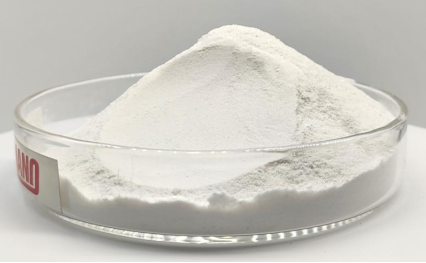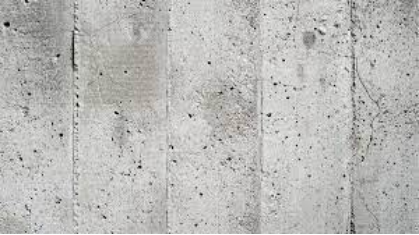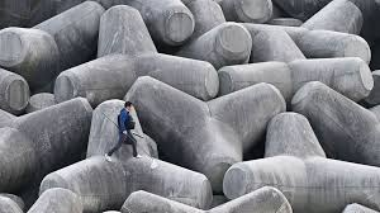- Home
- Products
- Elementary
- Boride Powder
- 3D Printing Powder
- Sulfide Powder
- Oxide Powder
- Carbide powder
- Nitride Powder
- Silicide Powder
- Hydride Powder
- Telluride Powder
- Selenide Powder
- Stearic Acid Series
- Phosphide Powder
- Nanoparticles
- Metal Alloy
- MAX Phase
- Lithium Battery Anode
- Surfactant
- Molecular sieves
- Concrete Admixtures
- News
- Answers
- Contact
- About
News
- 1
- 1
Brief analysis of the application of polycarboxylate superplasticizer in concrete
If you are looking for high-quality products, please feel free to contact us and send an inquiry, email: brad@ihpa.net
Brief analysis of the application of polycarboxylate superplasticizer in concrete
With the quick growth of contemporary structure modern-day innovation, specifically the commercialization of normal concrete, individuals have higher and greater needs for concrete stamina contemporary technology. However, simply making concrete reach the design durability can no longer fulfill the requirements of the development of contemporary culture. Please consider the problems of environmental protection, durability and some distinct design demands.
In order to improve the building effectiveness, mechanical properties, and toughness of concrete, products such as concrete admixtures have gotten exceptional rates of interest. Admixtures continue to introduce and progress with the advancement of concrete. Presently, polycarboxylic acid admixtures are commonly used in concrete. It is widely made use of in frameworks. The high water reduction price and high adaptability of polycarboxylic acid can successfully enhance concrete efficiency. In useful applications, it helps with transportation and boosts building rate and high quality. Therefore, applying polycarboxylate superplasticizer rep not only considerably boosts financial advantages but also improves the premium and strength of modern-day structure structures in helpful applications.
1. Application standing of concrete superplasticizer
In contemporary concrete, commonly used superplasticizers mostly include polycarboxylic acid-based, naphthalene-based, fatty acid-based superplasticizers, and so on. Various superplasticizers have their benefits and drawbacks. The complying examines the qualities of superplasticizers commonly utilized in contemporary construction in concrete applications:
1) The superplasticizer home of naphthalene-based admixtures is typically 17%, and their compatibility with matrix products is relatively narrow, while it is wider with sand and crushed rock products. Their fluidity performance is average, their slump and expandability losses are fairly big, and their water retention is poor. Efficiency in residential or commercial properties, bond, and climate adaptability could be more adequate.
2) The superplasticizer home of fat collection is usually 20%, and its common flexibility resembles that of naphthalene series admixtures. Its fluidness is ordinary, yet its depression and expandability losses are small during use, and its attachment and climate adaptability are great.
3) The superplasticizer home of polycarboxylate superplasticizer is typically 25%, and its compatibility with matrix materials is large, but its compatibility with sand and crushed rock materials is slim. Throughout use, the downturn and expandability losses are tiny and there is no loss. The fluidity is huge, and the water retention, bond, and environment adaptability are all excellent, but the use of innovation demands is greater.

Detailed evaluation reveals that the polycarboxylate superplasticizer has good impacts in all aspects, and all performance signs are much better than various other sorts of superplasticizers.
2. Application of polycarboxylate superplasticizer in modern-day concrete
l Groups of polycarboxylate superplasticizers
In China's quick economic and technical development, polycarboxylate superplasticizers with reliable superplasticizer properties are usually used in building and construction design concrete. The usual ones consist of the following: polypropylene hydrochloric acid, methylpropionic acid, and maleic acid—polymers, polymaleic acid, and so on. Polypropylene hydrochloric acid superplasticizer is compatible with various other sorts of cement throughout use and has been commonly utilized in actual use. The monomer acrylic acid is used as the matrix and combined with polyoxyethylene to obtain a product with a greater molecular weight. Methylpropionic acid and maleic acid polymers block superplasticizer polymers composed of methylpropionic acid and maleic anhydride in the form of monomers. They are intensified with various other superplasticizers to guarantee Better fluidness and adsorption homes. Maleic acid is a water-insoluble, polymer-reactive fine-particle superplasticizer. The primary chain of its molecular framework contains acid anhydride, intramolecular lipid, and various other groups. When ready-mixed concrete, the alkaline part will certainly cause These molecular teams to be hydrolyzed. This way, the water-insoluble polymer can be efficiently changed into a soluble polymer. At the same time, under the activity of the dispersant, it can slowly enter the service. The hydrolysis sensation that occurs externally of the concrete profits slowly and gradually, properly staying clear of the downturn loss of the concrete framework via sluggish diffusion.

l Secret modern technologies for the application of polycarboxylate superplasticizers
Over the last few years, polycarboxylate superplasticizers have been widely used in many building and construction projects in China. Modern concrete has a high need for external useful ingredients. As a result, when adding the polycarboxylate superplasticizer to the concrete system, the following crucial technologies must be considered.
1) Polycarboxylic acid-based compatibility innovation. As a result of the special framework of polycarboxylic acid-based high-performance superplasticizers, they can not be saved and made use of together with other superplasticizers, particularly naphthalene-based superplasticizers. When different sorts of superplasticizers are required to be used reciprocally, the important containers should be completely cleansed to avoid cross-contamination from influencing the premium quality of the concrete. The adsorption performance of superplasticizers varies with different kinds of cement. Since polycarboxylate superplasticizers have a slim, compatible array with concrete, bad compatibility is inescapable. As a result, it is required to increase its dose or use different types of concrete. To effectively fix this trouble.
2) Polycarboxylate superplasticizer slowing down technology. As a result of the limited time it considers the retarder to work, its utilization can successfully lengthen the flexibility of concrete throughout the building and construction process. However, the conflict between both must also be thought about to prevent the decrease of concrete efficiency.
3) Air material control. The polycarboxylic acid superplasticizer has a good air-entraining effect and can be utilized along with defoaming agents, air-entraining representatives, etc. By initially removing and afterward introducing, the air internet content of concrete can be managed, and its workability and longevity can be boosted.
4) Control of mud content in sand and gravel. The efficiency of polycarboxylic acid-based high-performance superplasticizers can be affected by the quantity of mud existing in sand and gravel. Suppose the mud material in the sand and gravel exceeds 2%. In that case, the structure between the clay layers will certainly soak up a lot of superplasticizer particles, minimizing the circulation efficiency of the concrete. If the mud material throughout the construction process is relatively large, consider using a clay-resistant polycarboxylate superplasticizer.

3. Troubles existing in the practical application of polycarboxylate superplasticizers in concrete projects
l Impact of water usage on the efficiency of polycarboxylic acid concrete mix
The influence of water usage is really clear. In actual concrete design applications, in some cases, if the water consumption is raised by 1 to 3kg/m3, the concrete will certainly suffer from major bleeding, which will create issues such as matching, fining sand, and openings on the surface. Uniformity and construction quality can not be assured, resulting in reduced toughness and resilience of concrete structures.
l Polycarboxylic acid concrete is prone to delamination and partition
In many cases, adding polycarboxylate superplasticizer to concrete will significantly lower the thickness of the slurry. At the same time, even if the dose and water intake of the polycarboxylate superplasticizer are ideal and no blood loss occurs, the concrete is prone to delamination and partition, which is primarily shown in the reality that the rugged accumulation will certainly engage with the mortar., the pure pulp separates and sinks in big quantities. This concrete combination does not cause any resonance throughout concrete design pouring, and the sensation of delamination and segregation is also really obvious.
l Unsatisfactory compatibility
Standard superplasticizers such as naphthalene, aliphatic, lignosulfonates, and sulfamates can be mixed in any percentage to satisfy numerous concrete preparation demands. These standard superplasticizers are not just well soluble in water but can likewise attain excellent superposition impacts when used in combination. Polycarboxylate superplasticizer has terrific limitations. It can only be used in combination with conventional superplasticizer lignosulfonate, and its compatibility with other traditional superplasticizers could be better. If utilized in combination with various other sorts of standard superplasticizers, not only is it hard to attain a superposition impact, but the fluidness of the concrete will likewise be really poor, water usage will be substantially boosted, slump loss will certainly be major, and the concrete will be dry and challenging to discharge, the stamina and sturdiness of concrete will certainly be seriously influenced.

4. Conclusion
To sum up, the molecular framework of polycarboxylate superplasticizers is particularly versatile and special, which can greatly enhance the diffusion efficiency of concrete cement bits and attain multi-functionality. Even if the concrete is extremely reliable, With the qualities of maintaining diffusion, decreasing thickness, and reducing contraction, the efficiency of all aspects of concrete has been substantially improved. It has excellent advancement and application prospects.
Polycarboxylate high-performance superplasticizer has superior advantages and solid application possibility in using construction concrete. However there are likewise lots of shortcomings. As long as the user is efficient in utilizing its benefits and boosting the imperfections in its application, the correct ideal outcomes can be acquired by recognizing and applying polycarboxylic acid high-performance admixtures.
5. Supplier
TRUNNANO is a supplier of concrete superplasticizers with over 12 years experience in nano-building energy conservation and nanotechnology development. It accepts payment via Credit Card, T/T, West Union and Paypal. Trunnano will ship the goods to customers overseas through FedEx, DHL, by air, or by sea. If you are looking for high-quality concrete superplasticizers please feel free to contact us and send an inquiry.
Inquiry us
PREVIOUS NEWS
building materials industry indispensable good material
NEXT NEWS
